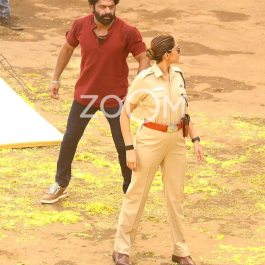The Evolution of Mobile Phones.. (11 pictures)
Image Gallery You are here
Views: 2198
Latest Posts
 आरती सिंह की संगीत समारोह में अंकिता विकी, रशमि और अन्यों की उपस्थिति
आरती सिंह की संगीत समारोह में अंकिता विकी, रशमि और अन्यों की उपस्थिति फिटनेस प्रभावक का दावा, इन 6 सरल कदमों से हफ्ते में 1 किलो से अधिक वजन कम करें
फिटनेस प्रभावक का दावा, इन 6 सरल कदमों से हफ्ते में 1 किलो से अधिक वजन कम करें गर्मी बढ़ गई है क्या? दिल्ली बस में बिकिनी पहनी महिला का वीडियो हास्यस्पद प्रतिक्रियाएँ प्राप्त हो रही हैं।
गर्मी बढ़ गई है क्या? दिल्ली बस में बिकिनी पहनी महिला का वीडियो हास्यस्पद प्रतिक्रियाएँ प्राप्त हो रही हैं। अपने कीबोर्ड पर ई और वाई के बीच देखें, यह इंटरनेट का नया ट्रेंड है जिस पर लोग पागल हैं। सबसे बेहतरीन मीम्स।
अपने कीबोर्ड पर ई और वाई के बीच देखें, यह इंटरनेट का नया ट्रेंड है जिस पर लोग पागल हैं। सबसे बेहतरीन मीम्स। पुरस्कार विजेता डॉक्टर ने मल्टीविटामिन विज्ञापन को टाला, कहा मल्टीविटामिन की कमी नामक कुछ नहीं होता है
पुरस्कार विजेता डॉक्टर ने मल्टीविटामिन विज्ञापन को टाला, कहा मल्टीविटामिन की कमी नामक कुछ नहीं होता है आपका साप्ताहिक राशिफल: सभी राशियों के लिए यहाँ ज्योतिषीय भविष्यवाणी देखें।
आपका साप्ताहिक राशिफल: सभी राशियों के लिए यहाँ ज्योतिषीय भविष्यवाणी देखें। दीपिका पदुकोण गर्भावस्था के दौरान फिल्म सेट पर कार्य करती हुई, स्वैग में बेबी बंप को दिखाती है।
दीपिका पदुकोण गर्भावस्था के दौरान फिल्म सेट पर कार्य करती हुई, स्वैग में बेबी बंप को दिखाती है। ऐश्वर्या राय ने अभिषेक बच्चन और आराध्या के साथ प्यार भरी तस्वीर साझा की, विवाह जयंती पर | यहाँ देखें
ऐश्वर्या राय ने अभिषेक बच्चन और आराध्या के साथ प्यार भरी तस्वीर साझा की, विवाह जयंती पर | यहाँ देखें Mumtaz याद करते हैं कि Fawad Khan ने मेरे लिए पूरे रेस्तरां को बुक किया, और Rahat Fateh Ali Khan ने मेरे लिए गाया, यही कारण है कि वह पाकिस्तानी कलाकारों पर प्रतिबंध को हटाने की समर्थन करती हैं
Mumtaz याद करते हैं कि Fawad Khan ने मेरे लिए पूरे रेस्तरां को बुक किया, और Rahat Fateh Ali Khan ने मेरे लिए गाया, यही कारण है कि वह पाकिस्तानी कलाकारों पर प्रतिबंध को हटाने की समर्थन करती हैं राजकुमार राव ने माना कि उन्होंने अपनी ठोड़ी पर फिलर करवाया है, कहा कि इससे उनका आत्मविश्वास बढ़ा है: कोई प्लास्टिक सर्जरी नहीं
राजकुमार राव ने माना कि उन्होंने अपनी ठोड़ी पर फिलर करवाया है, कहा कि इससे उनका आत्मविश्वास बढ़ा है: कोई प्लास्टिक सर्जरी नहीं










